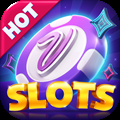
Welcome to the third episode of the Hearthstone Classroom, our series where we give lecture on card game fundamentals. In this edition, we'll visit one of the primary ways to counter-act your opponents on ladder or in tournaments, namely tech cards. Feel free to also check out our previous lectures to learn more about Hearthstone fundamentals, including Archetypes and Card advantage:
Lecture 01: Explaining archetypes
Lecture 02: Card advantage
What are tech cards?
It is the obvious starting point - what are they? Tech refers to certain cards that do not necessarily interact well with your deck, but are rather reactionary cards with the purpose of dealing with what your opponent may play. They usually come with an ability to debuff a nuisance enemy minion or remove it entirely, the most commonly known effect of which is the silence which removes any effect that may be affecting a minion. The importance of these cards is that they have the potential to swing tempo massively in your favour, either getting you back in the game or solidifying your control of the board.
How do you include them?
Big Game Hunter and Ironbeak Owl are auto-include tech cards nowadays.
First and foremost, when putting them in a deck it is always safe practice to focus on how the deck will work in and of itself. Knowing what deck type you intend to play, such as Control or Aggro, can narrow down the options when it comes to picking what tech to include. It is important to realise too that having too many tech cards will make the deck too situational, resulting in playing a number of these cards for no value as you scramble not to lose the board.
Also, including a tech card to give you the advantage against an unfavourable matchup (e.g. one [card]Blood Knight[/card] in control Warrior to face Paladins) is unlikely to pay the dividends you may have hoped. One card is unlikely to win you a bad matchup, after all they are tech cards not super cards. A specific card will often become a dead card against other classes and unsuited towards the rest of the deck. It would probably be better to change decks or class entirely to solve the situation.
What card(s) should you include?
There are a fair amount of viable options available when making this decision but only a few are favoured and actually see regular play. These cards are rotated in and out to adapt to the current state of the meta as it evolves. Knowing what your deck type is to begin with (i.e. Control or Aggro, etc) will help narrow down your options. The trouble is, after the auto inclusions of [card]Ironbeak Owl[/card] and [card]Big Game Hunter[/card] , there is usually only one space remaining for this type of card.
Below is a rundown of some of the prefered tech cards to provide you with all the information you will need when choosing and using tech cards in the future.
Mind Control Tech
You have probably used this card at some point. You probably picked it in an arena build and enjoyed a fair amount of success. At the cost of 3 mana, MCT fits nicely into a slot where some classes lack, which is an advantage for the card. It also works against every class during any stage of the meta, the only requirement of the card is that there are four or more minions on the opponent’s side of the board. However, the random luck element of the card is ultimately seen as its downfall to most players.
If you are playing against me, chances are MCT takes a [card]Tirion Fordring[/card] from a full board, but in most other situations it will likely leave you BabyRaging whilst sarcastically claiming how happy you are with a [card]Sunfury Protector[/card] when facing two taunted Molten Giants or something along those lines.
In relation to your deck build, MCT is suited for Tempo and Aggro decks to get rid of your opponent's removal options without needing to trade. It can also work in Anti-aggro decks too, as a way of not only removing a threat, but then using it to trade as a free minion.
MCT is not the strongest option out there, however the fact remains that, should you not have anything better, it does have the potential to change the game with a small amount of luck. Don't rule the little guy out too soon.
Zombie Chow
One of the most prominent early game tech cards in Hearthstone and agreed upon by the majority of players as the 1 drop to pick for Anti-aggro purposes. The appeal of course is that its mana to stats ratio allows it to trade with your opponents minions usually at a value of 2 to 1 in your favour. Against Aggro decks, this can seriously slow down the damage you take before reaching your AoE board clears.
Although its stats make it one of the strongest early game cards, its use is almost completely reversed as the game goes on. This is due to the drawback to stats deathrattle mechanic for the card which restores 5 health to your opponent. As Zombie Chow is used to trade at the start, it often restore less than its full potential as the enemy hero might not have take 5 damage. As the game goes on and you are pushing for the kill, a Zombie Chow becomes more of a hindrance. The exceptions to this being when facing a Handlock to play around [card]Molten Giant[/card] and when playing Priest if you have [card]Auchenai Soulpriest[/card] and [card]Circle of Healing[/card] .
Harrison Jones
Always looking for the next collectible to go in his museum, Harrison impacts the board by removing your opponent's weapon. In addition it draws cards equal to the amount of charges the weapon had remaining. This card draw effect makes it very appealing to classes that struggle with this; Paladin is the obvious benefactor of this card. Obviously then, Harrison is at his most useful when facing classes the predominantly run weapons - once in a blue moon you may be fortunate to punish a [card]Blingtron 3000[/card] - and being useful against five out of nine classes usually means more hit than miss. Similarly, you can play [card]Acidic Swamp Ooze[/card] aka 'the poor man's Harrison' to remove a weapon sans the card draw.
Similarly, you can play [card]Acidic Swamp Ooze[/card], a.k.a. "poor man's Harrison".
The ability to destroy a weapon can result in a huge loss of momentum for your opponent. Facing Warrior, taking a [card]Death's Bite[/card] means that they have one less activator available for a combo. When up against a Paladin, losing [card]Truesilver Champion[/card] drastically reduces their chances at keeping board control or, even better, after taking down [card]Tirion Fordring[/card] you have the possibility to draw three cards as well as destroying their Ashbringer and their hope in the process.
Things get a bit trickier with classes like Rogue and Shaman. Knowing the right time to play Harrison against Rogue is kind of a judgement call unless they make your mind up for you by playing an Oil on an [card]Assassin's Blade[/card]. Also, deciding if you need six cards from a [card]Doomhammer[/card] and maybe milling yourself is better than maybe them playing [card]Rockbiter Weapon[/card] and dealing 10 damage to face, and if you end up not overdrawing then you better be spamming the 'Sorry' emote.
Harrison is relatively flexible when it comes to being played. There are a variety of deck types worthy of his ability. Purely for his card draw, he is a welcome addition in Control, Tempo and Combo decks, especially as a way to gain options to continue piling on the pressure. On the other hand, although drawing cards and adding pressure is good for Aggro decks, at 5 mana Harrison Jones is a bit too slow of a card.
The Black Knight
One key component when deciding the right tech to include is to first identify what decks are popular in the meta. If there is a particular class or two dominating ladder that you are struggling to beat, chances are that one of these cards are advantageous to include. Warrior and Hunter is the time for Harrison. Mage and Hunter is the next card. If either Druid or Paladin is getting on your nerves then there is only one hero we deserve. The Black Knight.
Although it is a rare occurrence, when the planets align and control decks take over, The Black Knight comes into its own. It can usually be foreseen: aggro decks start out on top, the rubbutle that follows are Handlock and Control Warrior resulting in an emergence of many control decks. It is during this time that [card]Sludge Belcher[/card] becomes vital to the regime. Also, this is feeding time for the very powerful Combo Druid. The Black Knight eats cards like Sludge Belcher and [card]Druid of the Claw[/card] for breakfast, often nicely on curve too.
The difficulty with TBK is getting full value for the card.
However, the difficulty with TBK is getting full value for the card. It can't consistently take out Tirion Fordring or [card]Ancient of War[/card]. At 4/5 it is relatively understated for a 6 drop, meaning that taking out a reduced mana [card]Dread Corsair[/card] does not give you the tempo swing you want with the card. It also has to compete with some other very important 6 mana cards in the form of [card]Sylvanas Windrunner[/card], [card]Emperor Thaurissan[/card] and even [card]Piloted Sky Golem[/card] . But, if you can make room for TBK to fit alongside your 6 drops, dealing with a nuisance taunt without trading your board can cement your control on the game to get you that coveted GG.
In all honesty, The Black Knight is more of a tournament card used to target a specific deck, in ladder he works in Control and Midrange decks but only against mirror deck types. Perhaps if his stats were ever improved it would be played more, as playing him for zero value wouldn't be as bad.
Kezan Mystic
Realistically, Kezan Mystic's ability to steal an enemy secret is only going to be effective against two classes: It is rare that a Paladin runs secrets and even then, at the measly cost of 1 mana, they are hardly worth stealing. But, the two classes that do actually use secrets are two of the most popular on ladder, in Mage and Hunter.
Even though the opponent then knows the secret that has been stolen, there is still a lot of tempo gained on your behalf, as they are then faced with dilemma of playing around it as well as removing the Kezan Mystic along with any other minions of the board. A turn four Kezan can often leave your opponent already finding themselves too far behind to come back from.
At the cost of 4 mana, Kezan Mystic finds itself in one of the most competitive slots, facing the likes of [card]Piloted Shredder[/card] and a whole host of other strong class cards. In support however, what the card lacks in value opportunities (i.e. two out of nine classes) it makes up for in its versatility. Kezan is pretty much suited for any type of deck build with the exception of possibly aggro, not that it has stopped others from playing double Kezan in Zoolock. Sometimes it is the element of surprise which is Kezan Mystic's greatest strength.
Annoy-o-Tron
Although not necessarily recognised as a tech card, Annoy-o-Tron fits the theme in that it is a card played, not to synergise with your deck, but to deal with what the enemy is doing. With Divine Shield and Taunt, it will usually always eat up two incoming attacks regardless of damage. This is not only beneficial against the obvious threat of Aggro, but it also prevent large combo attacks, usually deterring it from even being played. This gives it an advantage over other early Anti-aggro drops like [card]Zombie Chow[/card]. Zombie Chow is not going to block 6 damage from [card]Force of Nature[/card] , [card]Savage Roar[/card] or 14 attack from [card]Death's Bite[/card] + [card]Grommash Hellscream[/card] .
At 2 mana, Annoy-o-Tron can be played early allowing you to establish a board behind it, or late game, filling out your mana curve as well as giving you time to get back into the game or push for the win depending on the position you find yourself at the time. The possibility to stop two attacks grants you a lot of options on how to play the game. Even if gets silenced, chances are you are happy about it as it means your larger taunts or deathrattle minions are more likely to stick.
Considering the aim of Annoy-o-Tron is to slow the game down, it is obvious that it is more advantageous to play it in decks where board control is key, such as Control, Midrange and Anti-aggro. True to its name, this card can be truly annoying and frustrating if your opponent is trying to rush you down only to have their plans foiled by this delightful little fella exclaiming, "Hello, hello, hello."
More on Follow @GosuGamersHS













